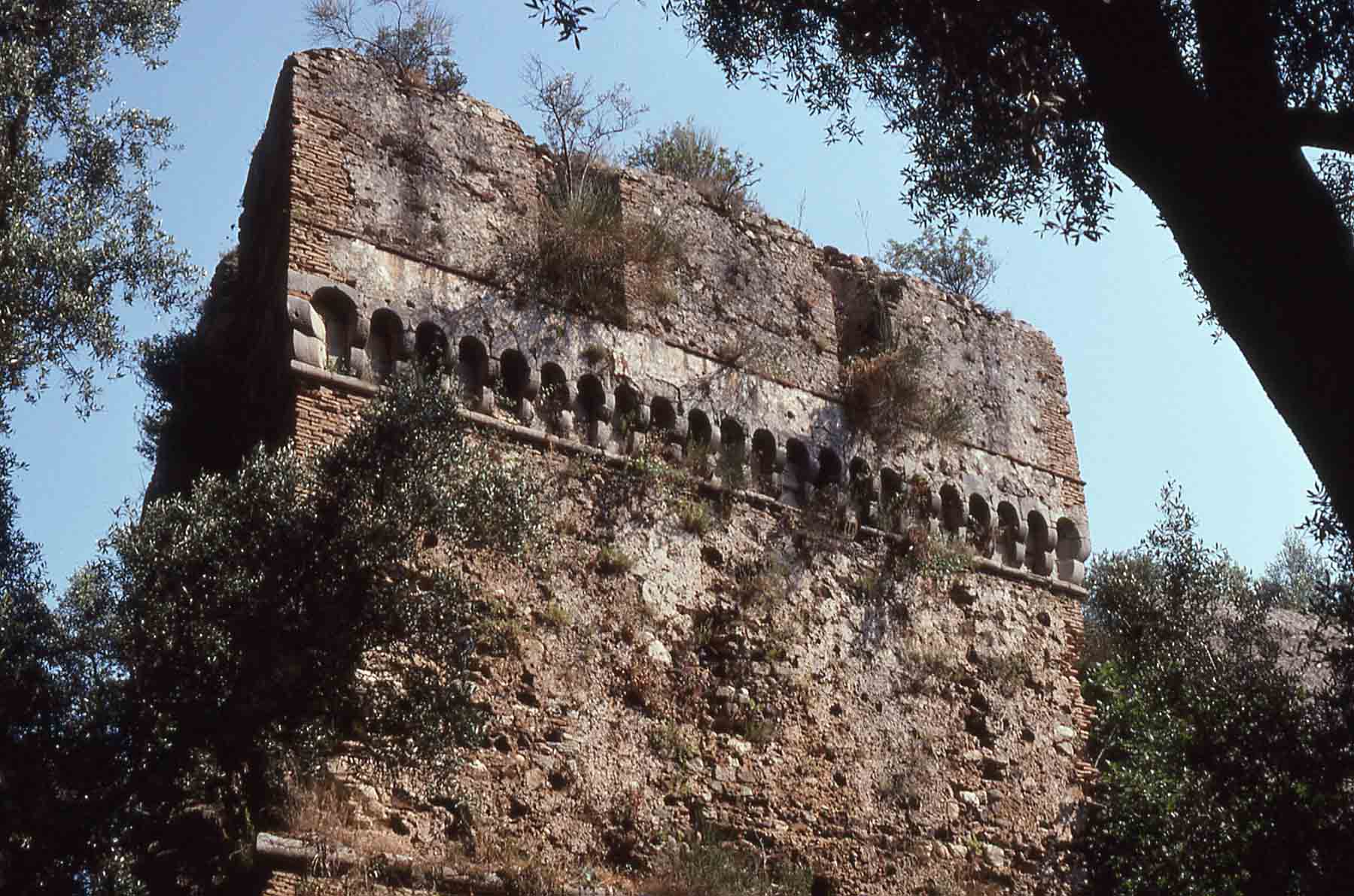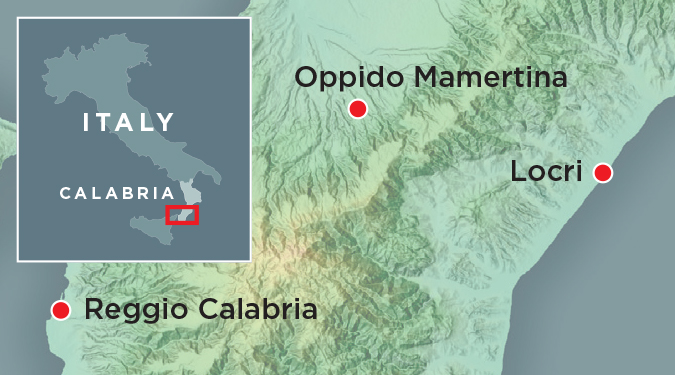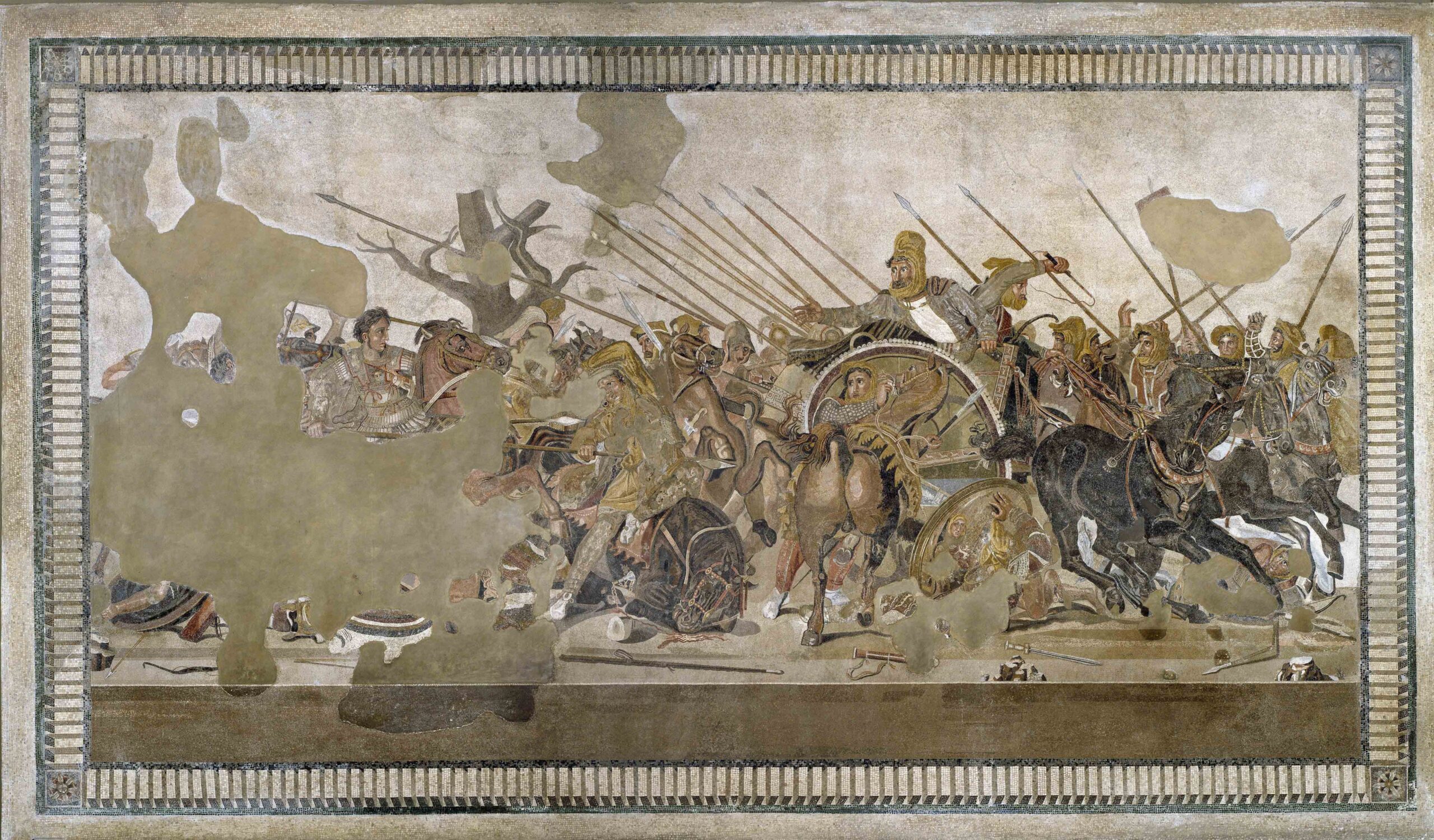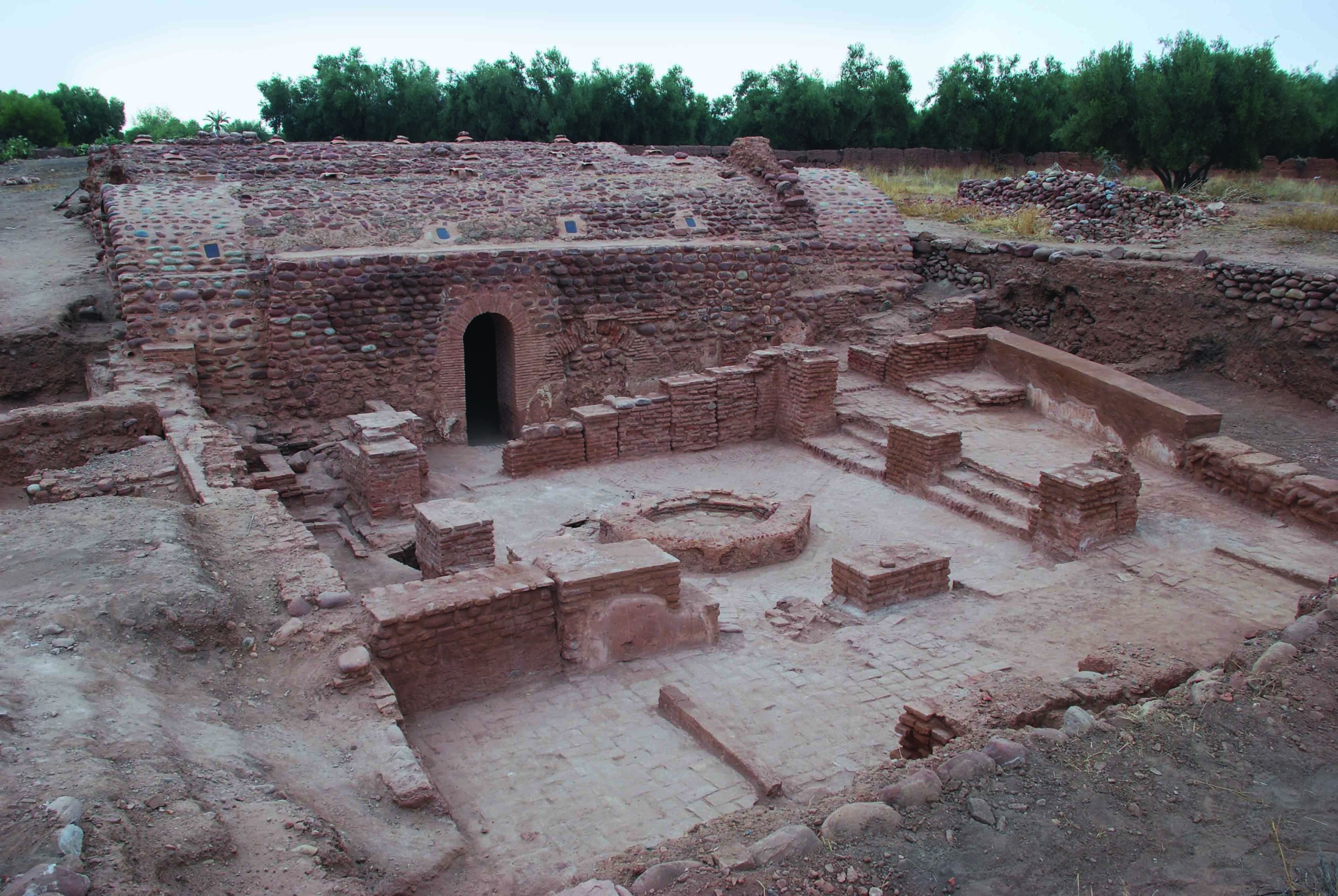
Roughly 1,000 feet above sea level in the hilly interior of Calabria—the toe of Italy’s boot—the town of Oppido Mamertina is surrounded by ancient forested terrain. The modern town is the successor to a medieval town called Oppido Vecchio that was destroyed by an earthquake in 1783, and whose evocative ruins still stand for visitors to admire. These include town gates and streets, and cloisters built by religious orders. There is also a castle, dating to the eleventh-century Norman conquest of southern Italy, which was periodically renovated according to the shifting fashions of the times until the seventeenth century.
Archaeologists have discovered that the area was home to Iron Age settlements dating back far earlier, to at least the seventh century B.C. In the late fourth century B.C., Oscan-speaking Italic peoples indigenous to southern Italy moved into the area, which, at the time, was controlled by the coastal Greek colony of Locri, some 15 miles away. One such group, the Tauriani, built a large town at the site of Contrada Mella, a short walk downhill from Oppido Vecchio. “The Tauriani do not appear to have fought against the nearby Greeks,” says archaeologist Paolo Visonà of the University of Kentucky. “They somehow established themselves in the region and developed a multifaceted relationship with their Greek neighbors. In fact, I think they constructed a unique identity out of their entanglement with both Greek and local Italic communities.” Examples of Greek influence found at Contrada Mella include aspects of town planning, masonry styles, a wealth of Greek coins, and decorative imagery inspired by Greek theater. Visonà believes it is possible the Tauriani came to the area as mercenaries hired to defend Locri’s interests against both Greek and indigenous rivals. After initially supporting the Carthaginian general Hannibal, the Tauriani formed a judicious alliance with the Roman Republic during the Second Punic War (218–201 B.C.). Possibly through the largesse of the victorious Romans, they subsequently expanded Contrada Mella.
THE SITE
Begin your trip with a visit to the archaeology museum in the city of Reggio Calabria for a primer on local history and Tauriani culture. After a drive of an hour or so northeast to Oppido Mamertina, signs in the main square provide directions to Oppido Vecchio, and an interpretive display offers guidance for a self-directed tour. While Contrada Mella is mostly overgrown, the site can be seen by looking downhill from the medieval ruins.

WHILE YOU’RE THERE
To fully appreciate the mélange of cultures in Calabria more than 2,000 years ago, continue east from Oppido Mamertina to the coast and visit the archaeological park of ancient Locri, where, in addition to several excellent seaside restaurants, you will find the remains of a once-grand theater and Ionic temple. Be sure to visit cdc.gov/travel for updates on health risks in the area.












